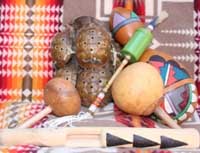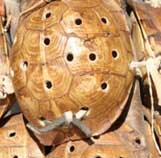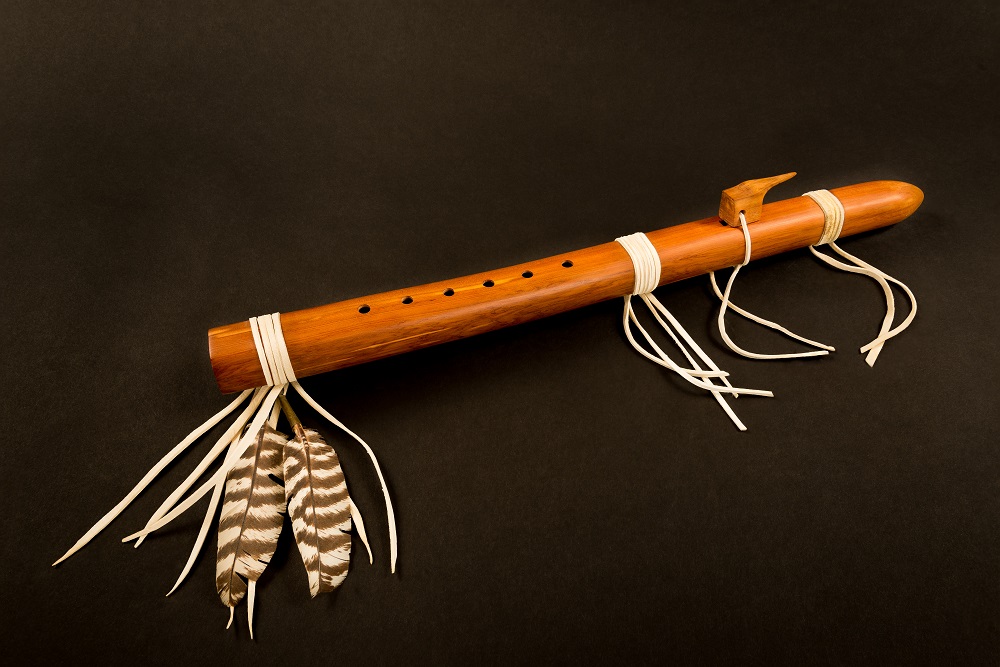
Musical Instruments II
Rattles

Rattles
Rattles and clappers of different kinds also play very important music roles, especially in women's musical performance.
In the photo at the left you will see a variety of instruments, including (at the bottom) a clapper-stick from California (Pomo); and moving clockwise from the bottom, a Bird Dance rattle from California (Kumeyaay); a turtle-shell shackle from Oklahoma (Cherokee), typically worn by women when dancing; a large decorated Pueblo gourd rattle; a Yaqui deer dance rattle; and in the center, a Gourd Dance rattle from Oklahoma (Kiowa).
Here is a close-up view of the Cherokee turtle-shell shackles. These are worn strapped to the lower legs by Cherokee and Creek women when dancing the "Stomp Dance" during ceremonials in Oklahoma, and provide a musical accompaniment to the singing, which is traditionally only done by men.

Oklahoma Cherokee
turtle-shell shackles
Flutes
Flutes and whistles are also important instruments, and flutes were traditionally played across North America except in the Pacific Northwest (where whistles predominated). Flutes were almost exclusively a solo instrument (played by a single individual), and not played for dance music, expect in the mountains of California, where the Maidu people perform a kind of dance to the music of multiple flutes and a large log drum known as a "foot drum." In contrast to flutes, whistles are specifically associated with dancing, and usually played by the dancers.
The photo to the above is an undecorated flute in the style common to the Eastern Woodlands and Great Plains regions, while the photo to the right shows a highly decorated eagle bone whistle of the type used by a male pow-wow dancer to musically signal the musicians that he would like the song to continue.

Bone Whistle





Competition singing, known as Inuit throat singing, was done by both men and women in the Northwest Coast and among Inuit and other Arctic peoples.





